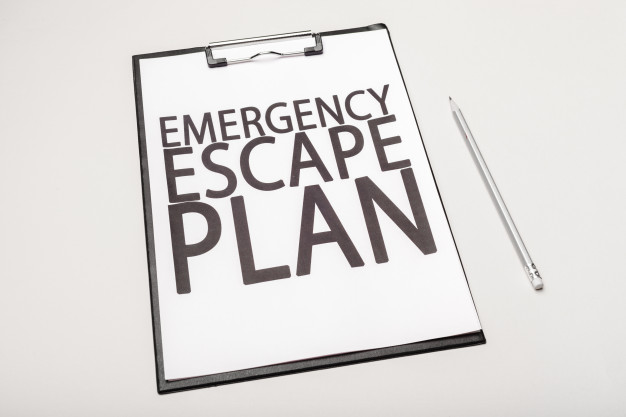So far, 2019 has seen a record number of storms in Michigan. For us insurance agents in Michigan, it has brought a lot of frustration for homeowners, as well as a lot of claims. In times like this, you may be wondering if it’s time to change your insurance policy or move to another insurance company. If so, now is a great time to do so.
The storms that have hit Michigan have brought heavy rains and wind, but when these storms have the potential to cause tornadoes, you will want to make sure you are prepared. Tornadoes cause severe damage to homes and in some cases, injuries or death to people. Because they can strike with little to no warning, it’s imperative to have a plan to save your life, home, children, pets and belongings.
Tornado Watch vs. Tornado Warning
If you live in lower Michigan (south, southwest or southeast Michigan), you live in a tornado risk zone. You can always tune to the NOAA weather radio to keep you informed of
National Weather Service weather alerts. A severe weather watchmeans that the current weather conditions are perfect for a tornado to occur. A severe weather warningmeans that a tornado has already been reported, has touched down, or has been indicated by a radar.
Just to clarify:
- Tornado Watch = Strong possibility of a tornado based on current conditions
- Tornado Warning = A Tornado is already occurring or has touched down
The first step in preparation is to have a written plan, and to practice a tornado drill at home. You should conduct this plan on a routine basis, so you are prepared to help protect your family, pets and home/belongings in the event of a tornado.
Create a Written Plan
Tornado safety plans can be difficult for anyone to follow or even remember, especially during a tornado when your adrenaline is running high. Creating a tornado plan, writing it down, and then discussing it with family members helps to ensure everyone feels comfortable with it and understands what to do in case those tornado sirens go off nearby. Be sure to address the following key elements in your tornado safety plan:

Take Shelter in a Designated Place
Designate the safest place to meet in your home when a tornado warning is issued or if tornado sirens sound nearby. A basement, if available, is always your best option. If you don’t have a basement, choose a windowless interior room or hallway on the lowest level of your home. Be sure to discuss this room as well as the quickest and safest route to get to this spot from every room in the house.
Create a Tornado Supply Kit
It may seem silly, but in the unfortunate event that you are trapped after a tornado strikes, you will be so happy you prepared a safety kit ahead of time. A tornado survival kit should include tornado-specific safety supplies you may need, and always include a whistle so you can signal for help if you are trapped. Other necessities include flashlights, extra batteries, and a portable radio so you can tune in for weather alerts. Keep the kit and supplies in your designated safety room – or along the path to your safety room. Also, don’t forget to designate one individual who will be responsible for keeping the survival kit stocked, and to grab the kit on the way to your designated room or location during the tornado emergency.
Be Prepared to Stay in Touch
Have a plan to keep in touch with family members who may not be at home when a tornado strikes. The best option is to ask an out-of-state relative or friend to serve as a family emergency contact. Make sure all family members have the emergency contact information and know the process to contact the designated person.
Safety Drills
Make sure to discuss the basic safety drills of tornado survival. Everyone should know the crouch and cover method at the very least. If your designated safety room is the basement or an inside room, it’s a good idea to stock a large, sturdy object in this safety area for added protection during a tornado. Mattresses and sleeping bags are also good for extra coverage.
Practice the Safety Plan Often
Set aside time to conduct tornado drills twice a year. During this time, go over the safety escape route, the designated room or shelter location, ensure your supply kit is stocked, and a family emergency contact is still in place. Then, on the designated drill day, do the following:
- Pretend as if the tornado is real and has been sighted or a warning/siren have been issued. Use all available, designated means to alert participants of the test, notifying them to make their way to the designated shelter area.
- The responsible family member should pick up the tornado supply and survival kit on his or her way to the designated safety area.
- Once everyone is gathered in the shelter area, practice any safety measures that are part of your plan—including properly crouching down as low as possible, facing the floor and covering heads with hands.
After the Drill, Review Your Plan
Talk to everyone in your family and ask questions. Evaluate how well the drill went and then update your plan as necessary. Here are a few questions to ask:
- How quickly was everyone able to get to the shelter area?
- Could quicker escape paths be used?
- Was the access route to the safe area cluttered or disorganized?
- Is an additional shelter area required?
- Did the notification process run smoothly? If not, how can it be improved?
- Was the tornado supply and survival kit adequately stocked and available in a timely manner?
Tornado Insurance Michigan Coverage
A tornado doesn’t have to destroy your entire home for it to be debilitating. Tornadoes bring winds, rain and flying debris – all can cause severe enough damage that you will need to contact your insurance company. The best way to be prepared is to work with a local insurance agent, someone who lives in your area and knows the ins and outs of Michigan’s weather, as well as the structure of most Michigan homes. Having the best and the most coverage before a tornado strikes is key to ensuring your out of pocket costs are lower for repairs or replacement.


